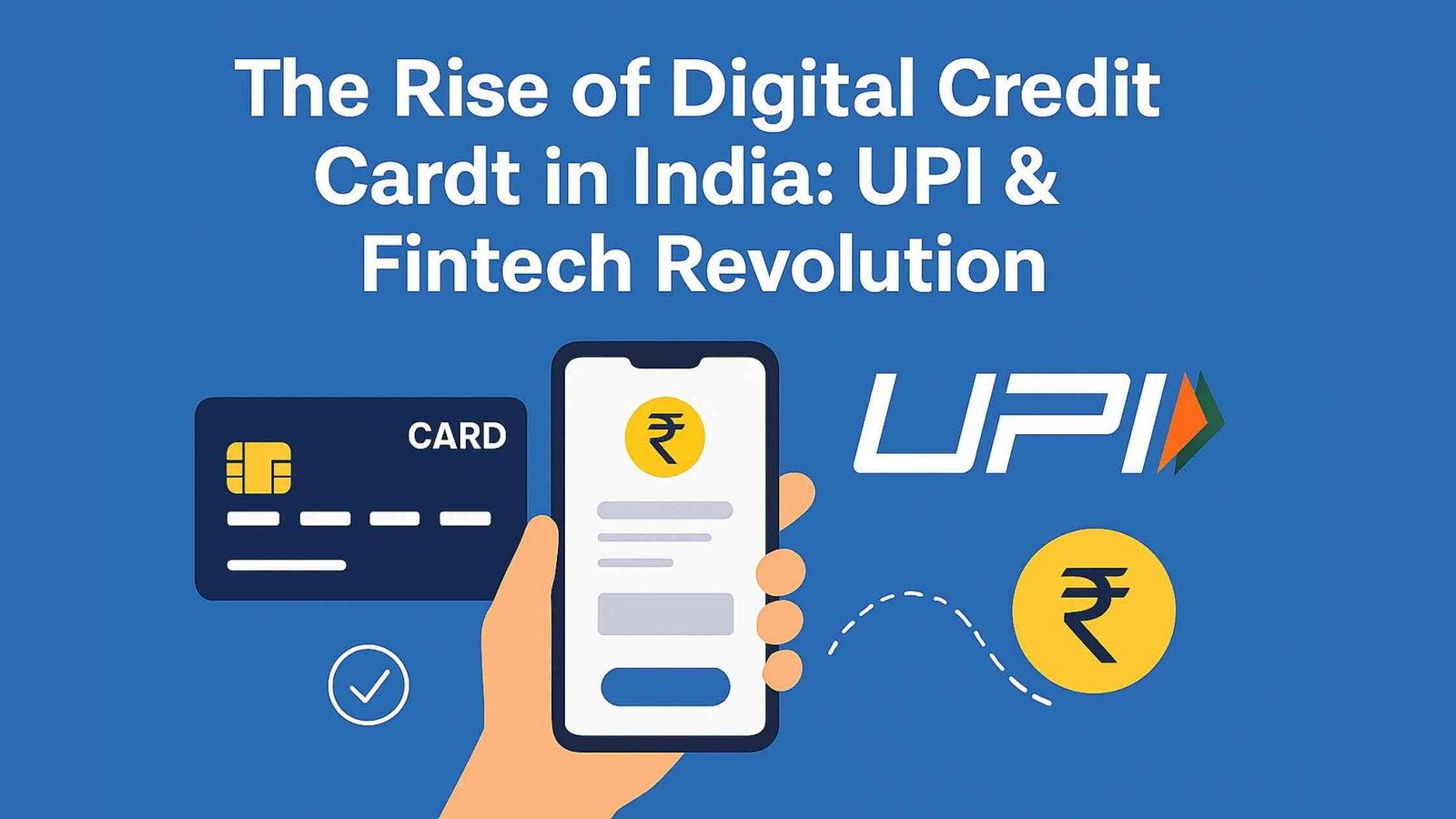India’s credit system is evolving at lightning speed. With the rise of digital credit cards, the integration of UPI (Unified Payments Interface), and rapid innovation from fintech companies, consumers today enjoy faster, safer, and smarter credit solutions than ever before.
This article will explain:
- The growth of digital credit cards in India
- How UPI and fintech are changing the way we spend
- The benefits of using digital credit cards
- Whether UPI could replace traditional credit cards in the future
Growth of Digital Credit Cards in India
- Over 500 million Indians use UPI, making it the world’s largest real-time payment ecosystem.
- RBI has enabled RuPay credit cards on UPI, allowing QR-based payments directly from a credit line.
- Fintechs like OneCard, Slice, and Uni are introducing virtual credit cards that don’t require plastic.
This makes credit more inclusive and opens access to India’s younger, digital-first generation.
Key Benefits of Digital Credit Cards
- No Plastic Needed – All card details live inside your mobile app.
- Instant Issuance – Start using your card within minutes.
- UPI Integration – Pay with QR codes anywhere UPI is accepted.
- High Security – Tokenization, biometrics, and dynamic CVVs reduce fraud.
- Smarter Rewards – AI-powered apps personalize cashback, discounts, and EMI options.
UPI vs Traditional Credit Cards
| Feature | Traditional Credit Cards | UPI-Linked Digital Credit Cards |
|---|---|---|
| Acceptance | POS machines, online payments | UPI apps, QR codes, online |
| Ease of Use | Requires swipe/tap | Scan & Pay instantly via UPI |
| Rewards | Bank loyalty points | Flexible, app-based rewards |
| Security | Risk of skimming or loss | Tokenization & biometrics |
| Fees | Annual fees ₹500–₹5,000 | Many are lifetime free |
This comparison shows why UPI-linked credit cards are fast becoming India’s preferred choice.
Fintech Players Driving the Change
OneCard
App-first, lifetime-free credit card, ideal for millennials and Gen Z.
Slice
Offers cashback and flexible EMIs, widely used by students and young professionals.
Uni
Introduced the “Pay 1/3rd” model, splitting bills into three easy monthly payments.
Paytm, PhonePe, and Google Pay
All now support RuPay credit cards on UPI, bridging the gap between UPI and traditional credit.
Future of Credit in India
- RBI’s UPI push will accelerate adoption of digital credit cards.
- AI-driven personalization will make rewards more relevant and useful.
- BNPL vs Credit Cards – Both will co-exist, serving different spending needs.
- Plastic-free future – By 2030, most Indians may never need a physical credit card.
Frequently Asked Questions
What is a digital credit card in India?
A digital credit card is a virtual card issued by banks or fintechs, used via mobile apps and often linked to UPI.
How do UPI-linked credit cards work?
They let users pay using UPI QR codes, with funds deducted from the credit limit instead of a savings account.
Are digital credit cards safer than plastic cards?
Yes. With tokenization, biometric authentication, and app-only access, digital credit cards significantly reduce fraud risks.
Conclusion
The rise of digital credit cards in India is reshaping the future of payments. With UPI integration, fintech-driven innovation, and RBI’s regulatory support, consumers can now enjoy secure, flexible, and smarter ways to use credit.
👉 Want to compare the best options? Check out our guide on Best Credit Cards in India 2025.
💬 Have questions about digital credit cards? Drop them in the comments below or subscribe to our newsletter for more finance insights.


